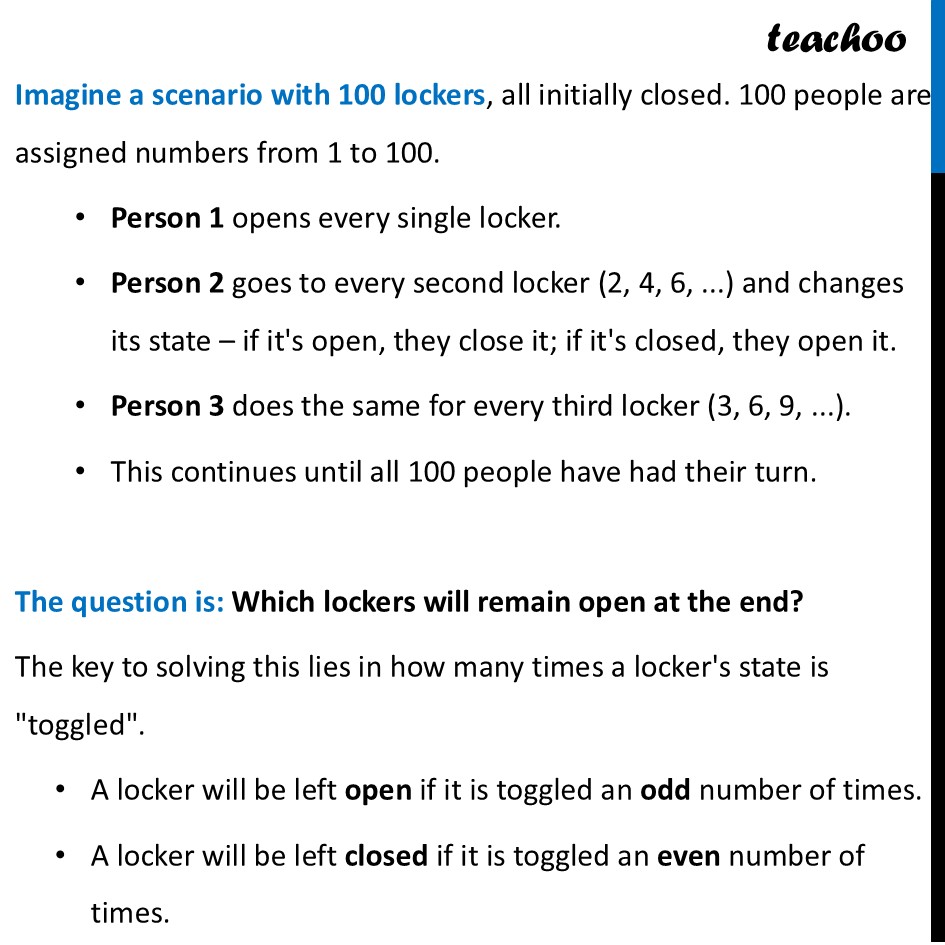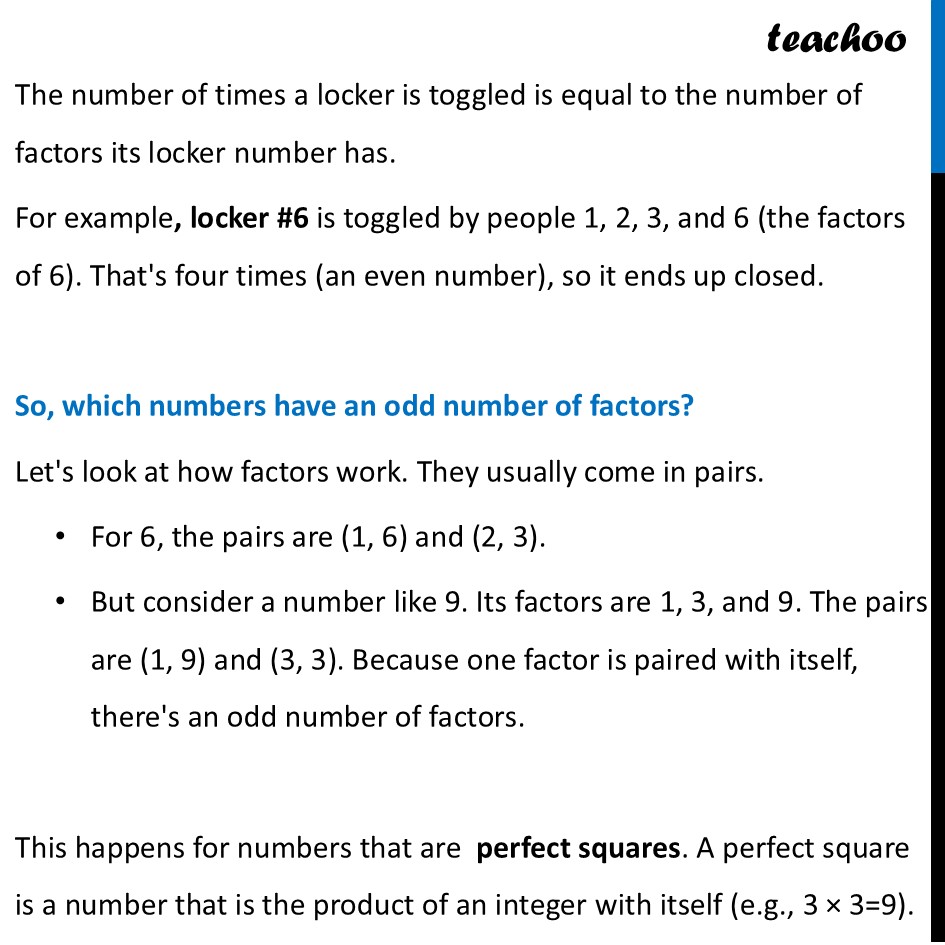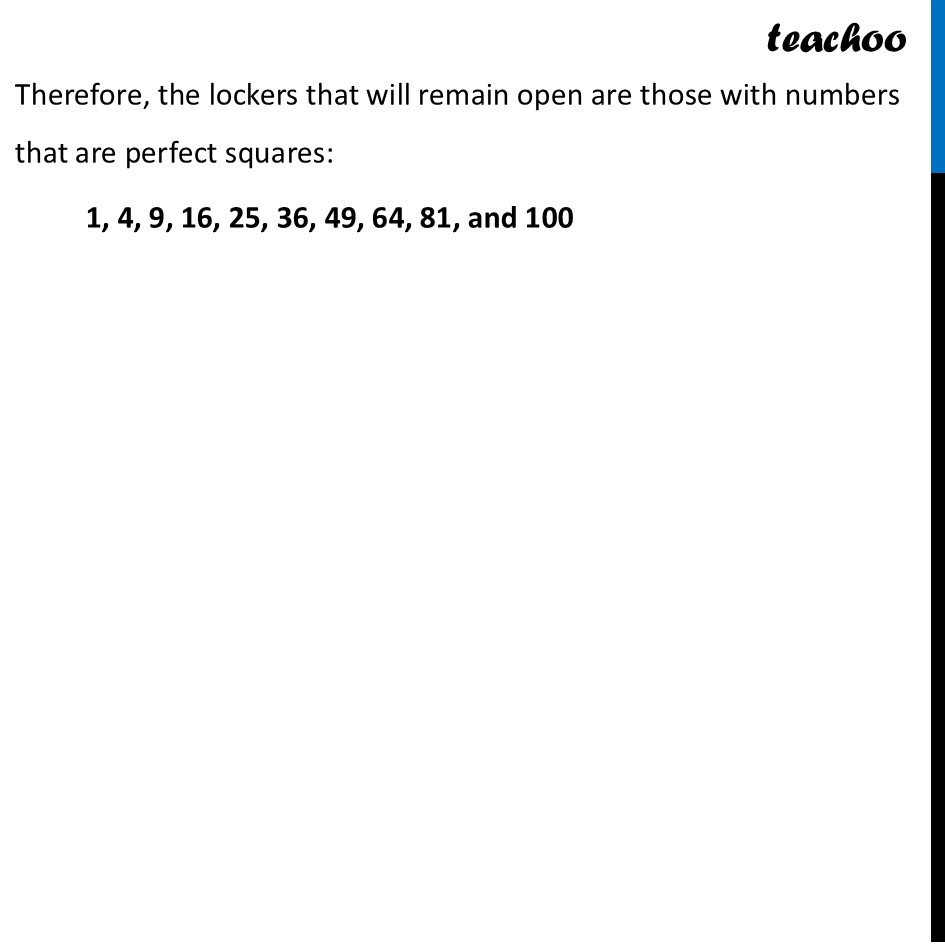



Introduction
Last updated at July 29, 2025 by Teachoo




Transcript
Queen Ratnamanjuri's GameImagine a scenario with 100 lockers, all initially closed. 100 people are assigned numbers from 1 to 100. Person 1 opens every single locker. Person 2 goes to every second locker (2, 4, 6, ...) and changes its state – if it's open, they close it; if it's closed, they open it. Person 3 does the same for every third locker (3, 6, 9, ...). This continues until all 100 people have had their turn. The question is: Which lockers will remain open at the end? The key to solving this lies in how many times a locker's state is "toggled". A locker will be left open if it is toggled an odd number of times. A locker will be left closed if it is toggled an even number of times. The number of times a locker is toggled is equal to the number of factors its locker number has. For example, locker #6 is toggled by people 1, 2, 3, and 6 (the factors of 6). That's four times (an even number), so it ends up closed. So, which numbers have an odd number of factors? Let's look at how factors work. They usually come in pairs. For 6, the pairs are (1, 6) and (2, 3). But consider a number like 9. Its factors are 1, 3, and 9. The pairs are (1, 9) and (3, 3). Because one factor is paired with itself, there's an odd number of factors. This happens for numbers that are perfect squares. A perfect square is a number that is the product of an integer with itself (e.g., 3 × 3=9). Therefore, the lockers that will remain open are those with numbers that are perfect squares: 1, 4, 9, 16, 25, 36, 49, 64, 81, and 100